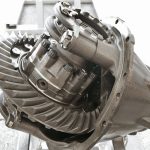High torque is required to start the vehicle from rest, accelerating, hill climbing, pulling a load and facing other resistances. The torque developed by the engine is increasing within limits with the increase of engine speed and reaches a maximum value at some predominant speed.
Due to the variable nature of the vehicle resistance resulting in load and gradient changes, it requires that the engine power should be available over a wide range of road speeds. Therefore, a single torque multiplication in the rear axle must be interposed and a variable multiplication factor in the gearbox is provided for this purpose.
What Is Gearbox?
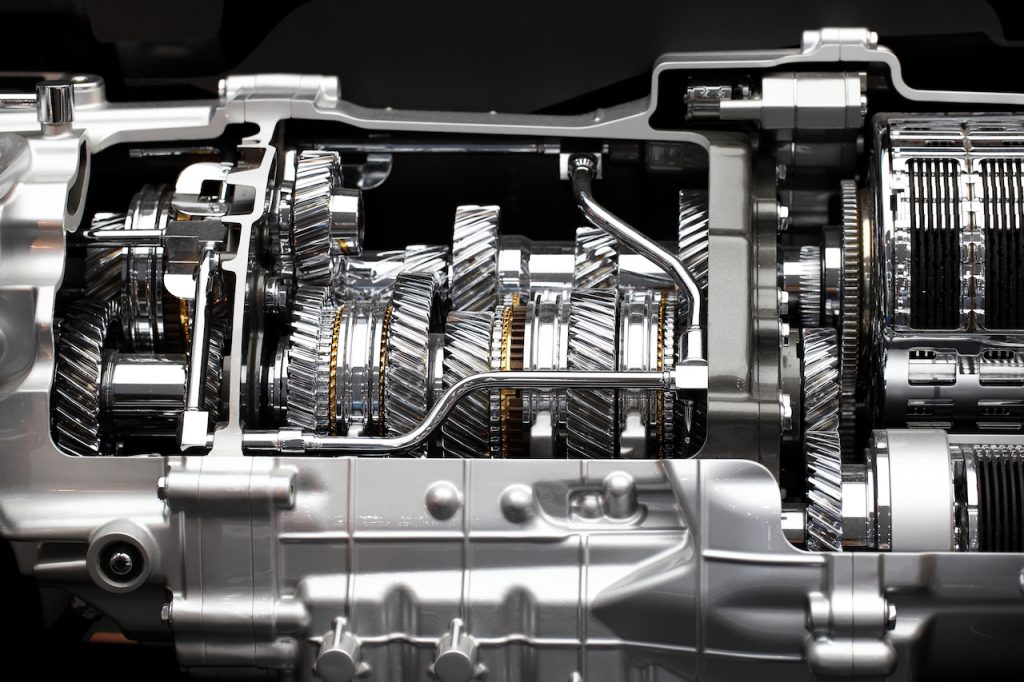
The gearbox is a mechanical device used to increase the output torque or to change the speed (RPM) of a motor. The shaft of the motor is connected to one end of the gearbox and through the internal configuration of the gears of a gearbox, provides a given output torque and speed determined by the gear ratio.
Necessity Of Gearbox
To maintain engine speed in all conditions of load and vehicle speed, the gearbox uses a system to maintain engine speed, While sacrificing the same road speed. To enable the engine to run faster on-road wheels as well as to multiply the torque, a gearbox is required.
Purpose Of Gearbox
- It helps the engine to disconnect from the driving wheels.
- It helps the running engine connect to the driving wheel smoothly and without shock.
- It provides the leverage between the engine and driving wheels to be varied.
- This helps in reducing the engine speed in the ratio of 4: 1 in the case of passenger cars and in a greater ratio in the case of heavy vehicles like trucks and lorries.
- It helps the driving wheels to drive at different speeds.
- It gives the relative movement between the engine and driving wheels due to the flexing of the road spring.
Working Of Gearbox
- The torque ratio between the engine and wheels should be varied for fast acceleration and for climbing gradients.
- It provides means of a reversal of vehicle motion.
- The transmission can disconnect from the engine by the neutral position of the gearbox (Gearbox).
What Is Gear Ratio?
Gear ratios are geared reduction steps in the gearbox. A gear reduction multiplies the engine torque by the gear ratio amount. Torque requirement at the wheel depends on operating conditions.
For example :
Moving a vehicle from a standstill requires much more torque than the peak torque of the engine. Therefore the torque multiplies by the first gear ratio.
Once starting the vehicle and moving using first gear, it requires less torque at the wheels to keep it moving. Hence it requires no multiplication or very less multiplication.
If the vehicle suddenly encounters a gradient, it will require more torque on the wheels to keep the vehicle moving. Hence an intermediate ratio requires.
Advantages Of Manual Transmission
- The vehicle is more attractive to the driver.
- The driver has complete control over the gears and when to shift the gears.
- The cost of a manual vehicle is lower than that of an automatic vehicle.
- The transmission cost is less for repair.
- It provides better mileage.
Disadvantages Of Manual Transmission
- Manual transmission can be annoying in heavy traffic.
- There may be some problems in learning the new driver.
- Precise control over hills is necessary to avoid stalling or rolling back.
- Hands and feet can hurt when using gears and clutch.
Advantages Of Automatic Transmission
- It is easy to drive in stop-and-go traffic.
- This transmission is fast and smooth.
- Current automated vehicles offer the same mileage as manual transmissions.
- The automatic transmission is very comfortable for the driver when driving.
Disadvantages Of Automatic Transmission
- Buying an automatic transmission vehicle is more expensive than a manual transmission vehicle.
- There are more moving parts in the automatic transmission, which increases the cost of repair.
- The gear change takes a little time and the gear shifting detects, and at times a slight shock is also failing.
- You cannot make the automatic gear more or less at your own will, suddenly there is a problem in overtaking the car.
Parts Of Gearbox
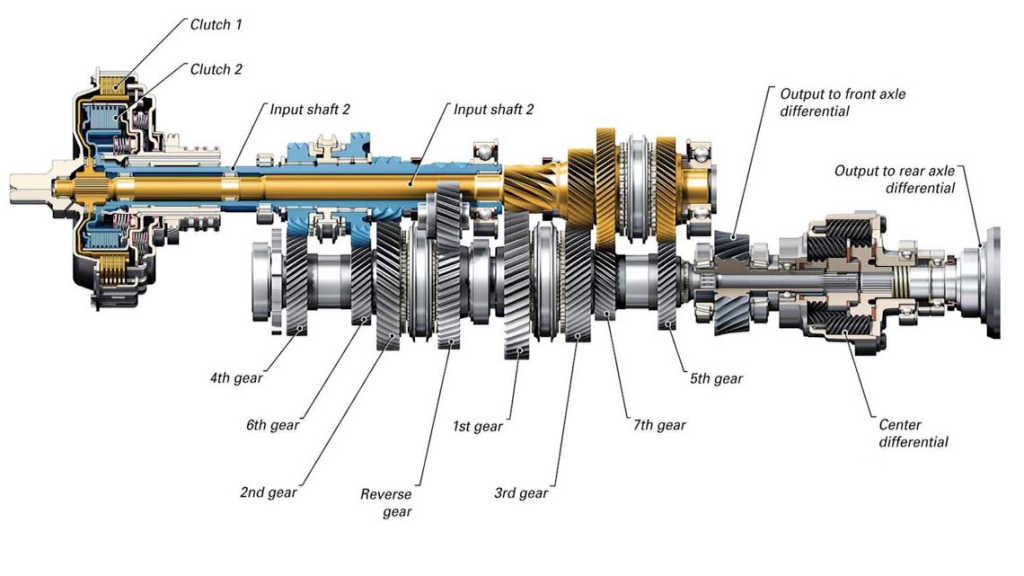
1. Clutch Shaft
The clutch shaft or driving shaft is connected through the clutch and when the clutch is engaged, the driving shaft also rotates.
Only one gear is fixed on the clutch shaft and this engine rotates at the same speed as the crankshaft. In addition, the driving shaft and main shaft are in the same line.
2. Counter Shaft / Layshaft
The countershaft is a shaft that connects directly to the clutch shaft. It has gear which connects it to the clutch shaft as well as the main shaft. It can be run at engine speed or below engine speed according to gear ratio.
3. Main Shaft / Output Shaft
The main shaft or output shaft rotates at different speeds and also provides the necessary torque to the vehicle.
The output shaft is a splined shaft so that the gear or synchronizer can be moved to engage or disengage.
4. Bearings
The bearings are required to support the rotating part and reduce friction. The gearbox has both a counter and a main shaft which is supported by the bearing.
5. Gears
Gears are used to transmit the power from one shaft to another shaft. The amount of torque transmitted through the gears depends on the size of the gears.
Higher the gear ratio, the higher the torque/acceleration and the lower the speed. All gears except those on the main shaft are fixed to their respective shafts;
6. Gear Selector Fork
Gear selectors are simple devices that use a lever that selects gears to engage in disengage mechanisms.
The motion of the lever slides the engaging part on the shaft. It depends on the type of gearbox whether the lever slides the gear or the synchronizer that is already forged along the main shaft.
Types Of Gearbox
Manual Transmissions
1. Sliding Mesh Gearbox
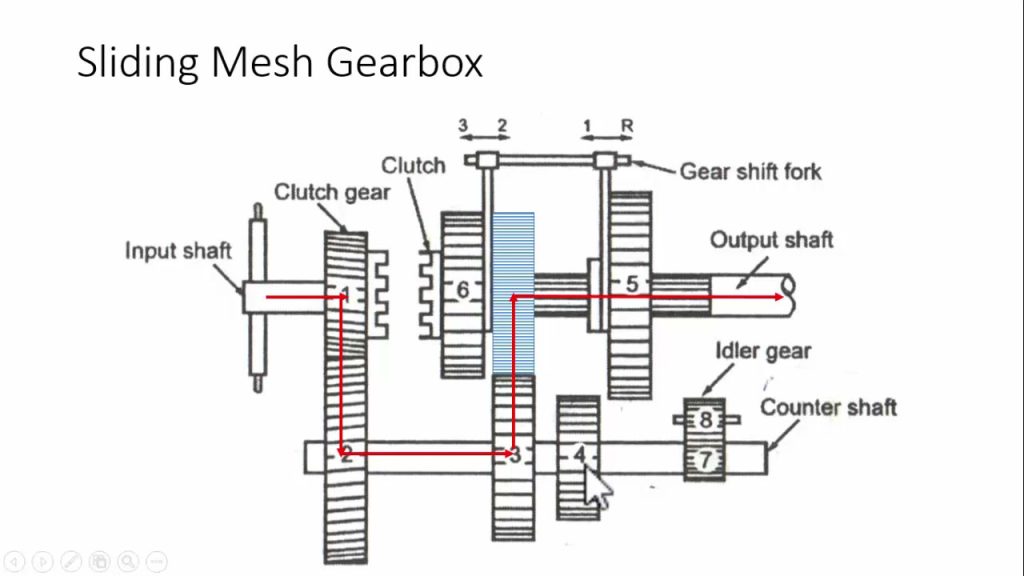
In this gearbox, spur gears are used. The Figure shows the construction of a sliding mesh-type transmission having three forward and one reverse speed.
There are three gears (1, 6 and 5) attached to the main shaft and four gears (2, 3,4 and 7) on the layshaft.
The two gears on the main shaft (6 and 5) can be slid by a shafting yoke and mesh with the gears (3 and 4) on a layshaft.
Therefore, it is called a sliding mesh gearbox (Gearbox). A separate idler gear (8) is mounted on the idler shaft.
2. Constant Mesh Gearbox
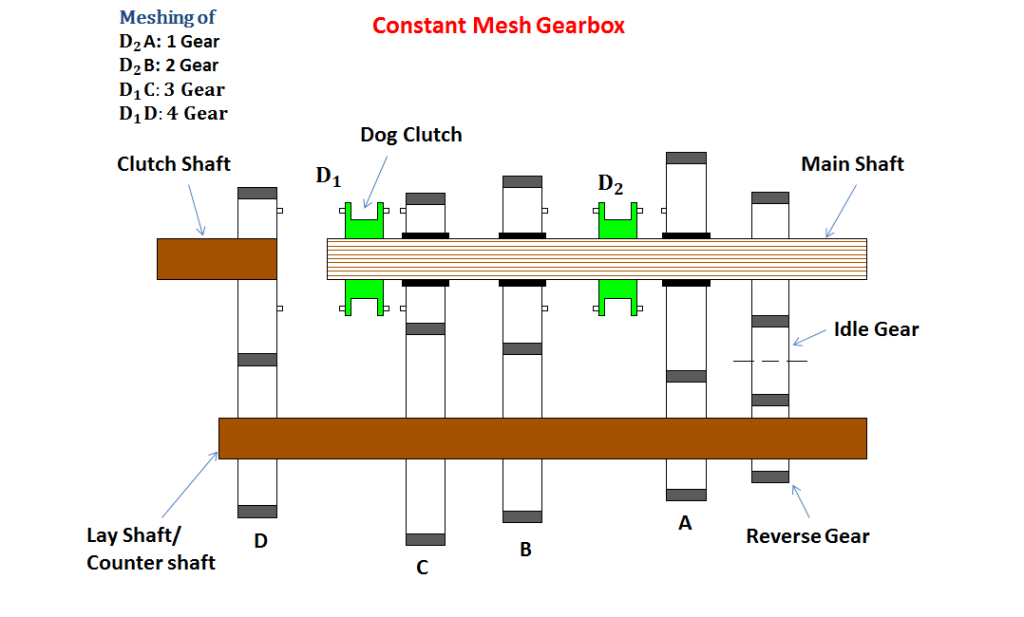
The figure shows the construction of a constant mesh-type gearbox having three forward and one reverse speed.
In this type of gearbox, all gears are constantly in mesh and dog clutches are used for engaging and disengaging the gears.
The dog clutches (D) and D2) are mounted on the main shaft. One (D2) is connected between the clutch gear and reverse gear whereas the other (D)) is placed between the low-speed gear and reverse gear.
The splines are provided on the main shaft for the linear movement of dogs. Dog clutch can slide on the shaft and rotate along with it.
All main shafts and layshaft gears, and idler gears are engaged by dog clutch to obtain opposite and slow speed. Only reverse gears are spur gear type and all others are helical gears.
So, this type has more defects when compared to a synchromesh type. The necessity of double clutching is needed so that it is not used to any large extent.
Automatic Transmissions
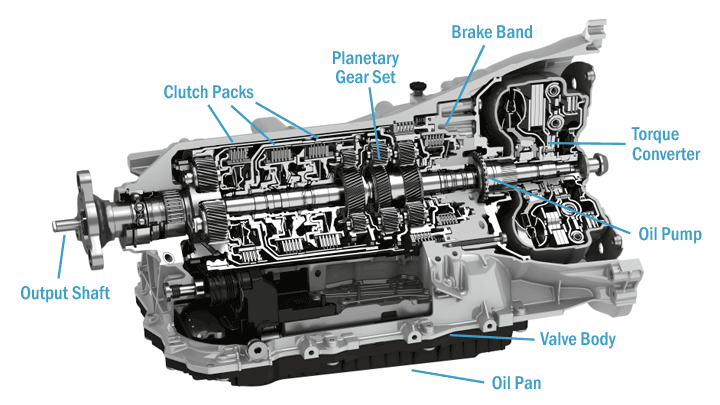
Various speeds are obtained automatically in gearboxes known as automatic gearboxes. Generally, the driver selects the car condition such as neutral, forward or reverse.
The gear selection, timing, and engagement of gear for the required gear speed select automatically when the accelerator press or is depressed.
The Automatic gearbox (Gearbox) does not require a gear change lever and a clutch pedal. Since both clutch and transmission are combined unit which works automatically.
The automatic gearbox operates in two ways namely.1. Hydramatic transmission, and 2. Torque converter transmission
Nowadays, automatic transmissions are popular with various names prescribed by manufacturers.
1. Hydramatic Transmission
In the case of a dramatic transmission gearbox, the planetary gearsets connect in such a way that power may transmit through them.
A centrifugal governor in the transmission chooses the proper gear according to the speed and throttle position.
The gear shifting from one gear to another gear is done through hydraulically operated pistons by actuating springs.
These springs control the brake bands on the planetary gear sets and clutches within the planetary unit. The various shifts are achieved by the throttle and centrifugal governor.
2. Torque Converter Transmission
A torque converter is a type of fluid coupling that transmits rotational power from a prime mover, such as an internal combustion engine, to a rotating driven load.
In a vehicle with an automatic transmission, the torque converter connects to the power source to the load.
It is usually located between the engine’s flexplate and transmission. The manual transmission will have an equal space mechanical clutch.
This is a feature beyond simple fluid coupling, which can match the rotational speed, but does not multiply torque, thus reducing power.
Torque converter transmission system employs fluid coupling, torque converter and epicyclic gear arrangement.
If all different devices are combined into one unit, they will do their duties jointly without any interruptions.







